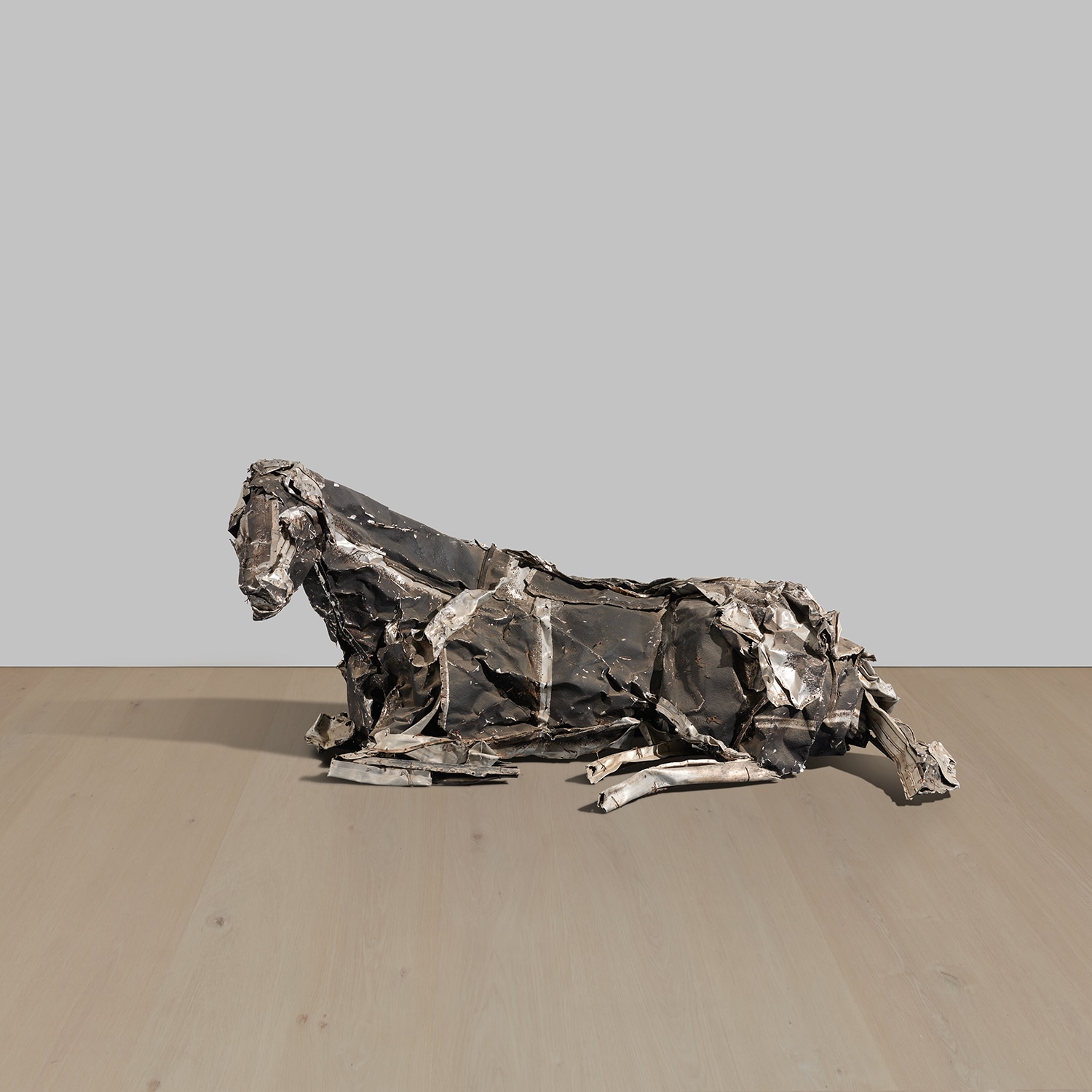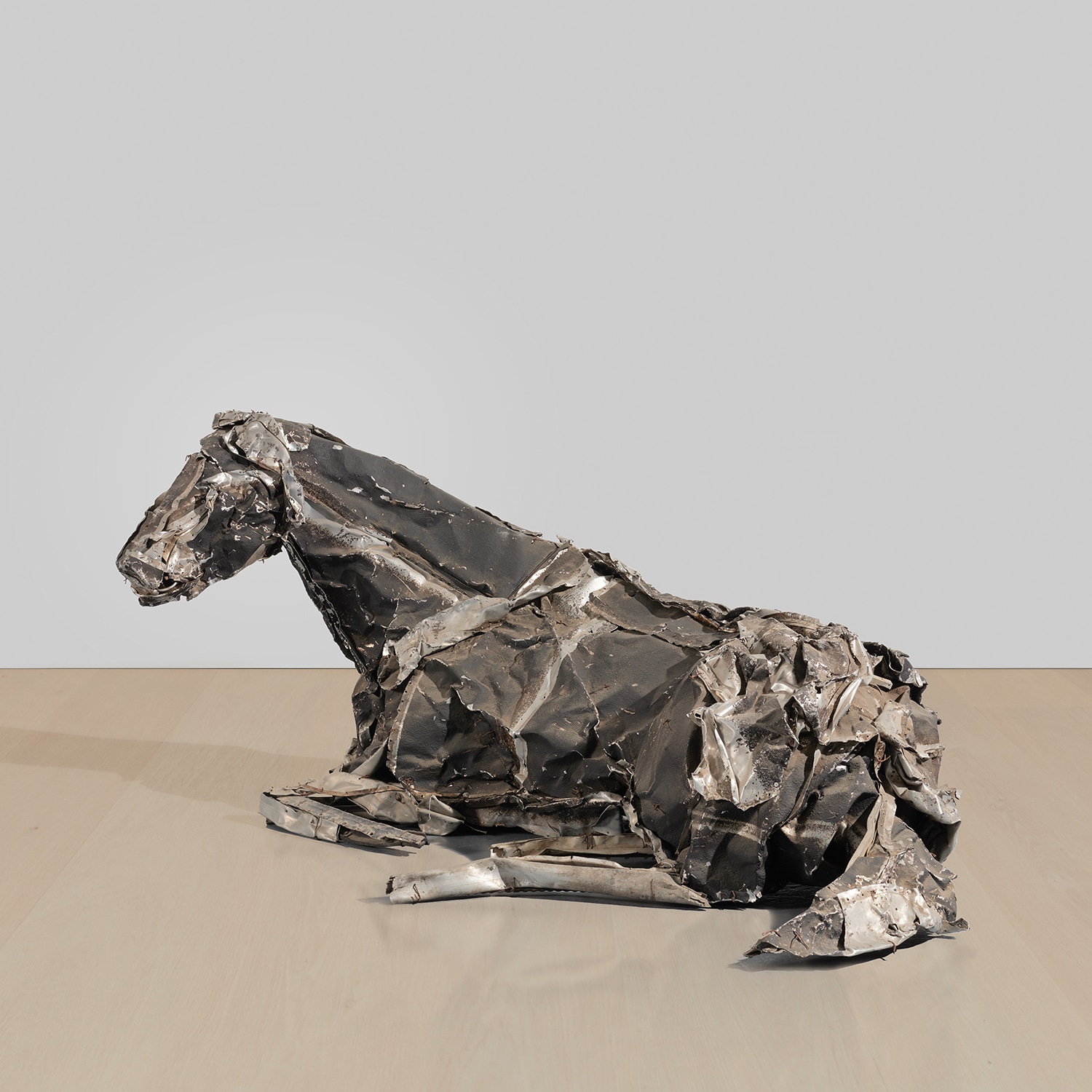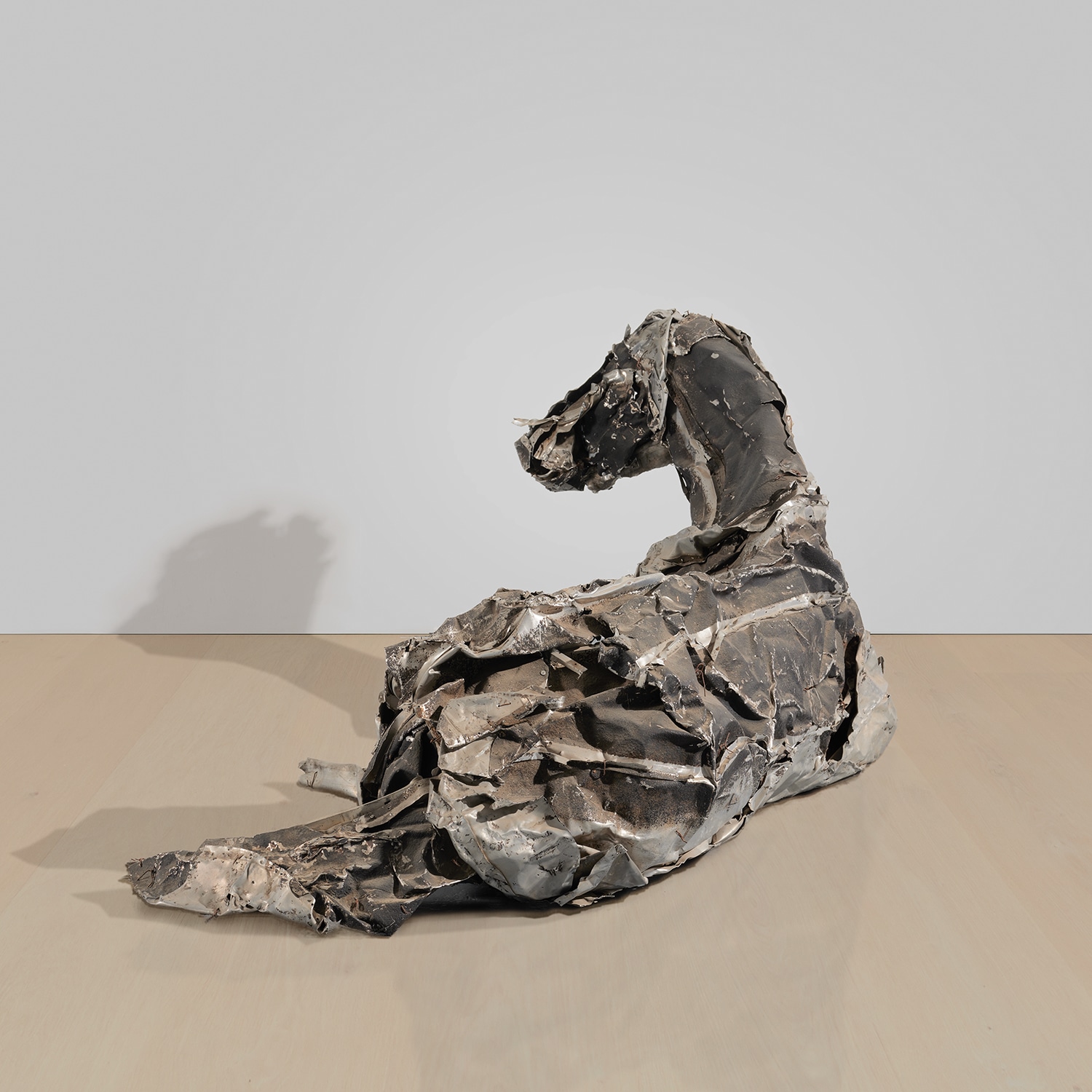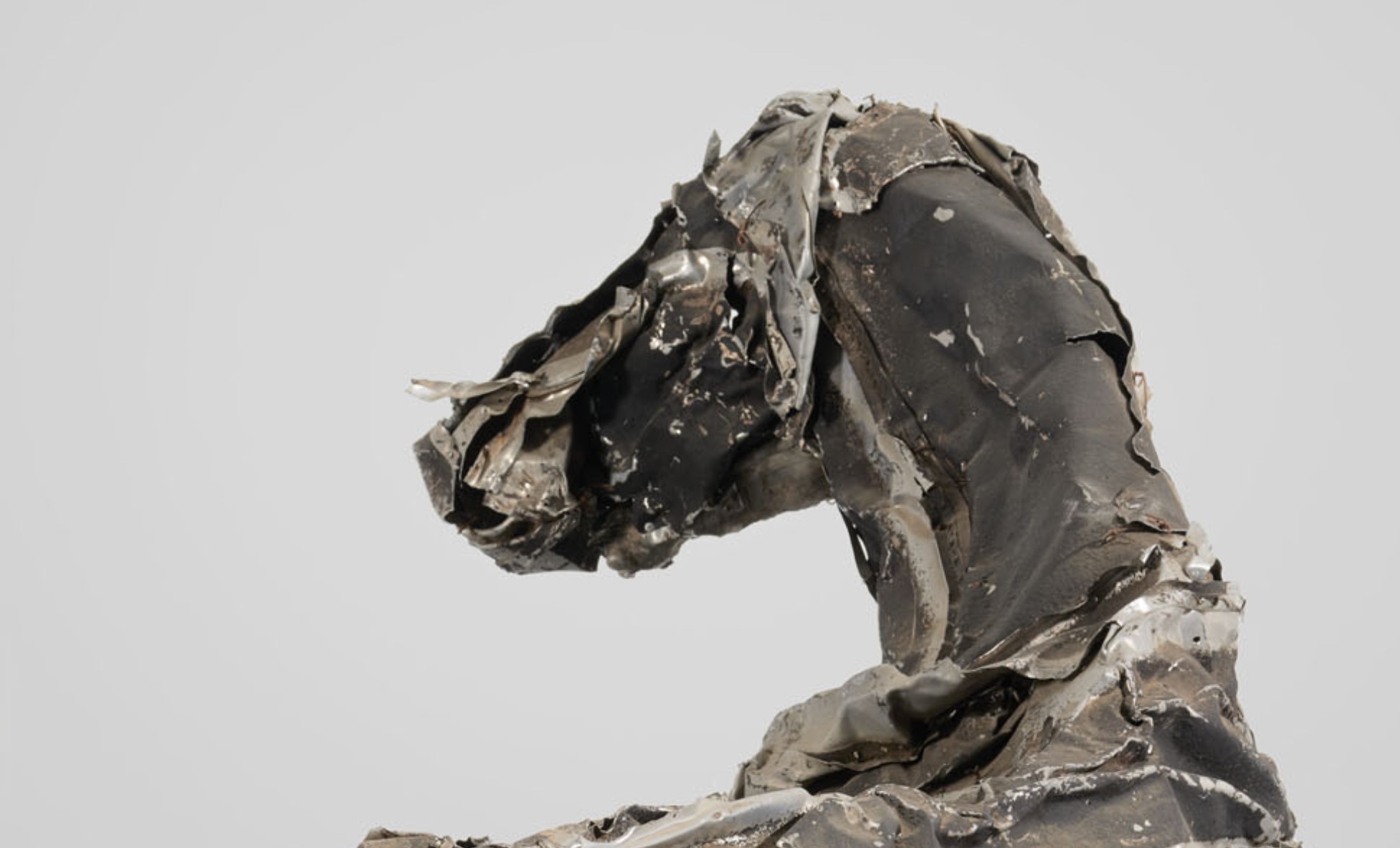


28
Deborah Butterfield
Horse #9
- Estimate
- $80,000 - 120,000
Further Details
“I feel that horses and art, literature, music, these are the extensions of this dialogue, I can put out my dialogue and you can carry it on.”
—Deborah Butterfield
Horse #9, executed in 1982, exemplifies Deborah Butterfield’s departure from the traditional equestrian monument. A mountain of misshapen metals, ranging in tone and sheen from glistening silver to rusted brown to a deep, matte umber brown, this work by the celebrated sculptor uses her signature textural language to depict a horse at utter repose.
Rather than highlighting the rider and emphasizing the horse's utilitarian role, Butterfield focuses solely on the horse itself, inviting viewers to engage with the animal on a personal level. "I’m trying to get the viewer to project himself or herself into the form of the horse,” the artist has said of her sculptures. “I want people to actually be able to crawl into that shape and inhabit it, and to perceive in a different way."i In Horse #9, Butterfield depicts a reclining mare with its legs and tail tucked in, a striking difference from the artist’s usual standing figures. By depicting the equine form in a graceful and docile pose, Butterfield pushes back against the predominant war horse imagery – depicting the animal as aggressive, domineering, and overbearingly masculine – which permeates Western art.
“I wanted to do big, beautiful mares that were as strong and imposing as stallions but capable of creation and nourishing life. It was a very personal feminist statement.”
—Deborah Butterfield
In Horse #9, the reserved, almost feminine nature of the reclined horse is juxtaposed by the industrial quality of the found materials used. Creating works such as Horse #9 was and is a lengthy process for the artist; not only involving months of foraging for materials but necessitating knowledge of the meticulous craft of metalworking to produce the final structure. Having created her first renditions of horses out of mud, clay and sticks, the artist shifted towards the more permanent and sturdier medium of found metal salvaged from scrap yards in 1979 – of which Horse #9 is an early example. The unevenly rusted surface of these metal assemblages could be seen as suggesting the coloring of different horse breeds, although the artist’s intention was never to replicate any aspect of the horse in specific. Yet, within these hefty forms, one can almost make out certain muscles and limbs of the animal – a slim hoof perhaps, or an elegant snout. Just as Louise Nevelson created sculptural forms out of found wood, in repurposing different scrap metal and steel materials—each with its own history and emotional weight—Butterfield transforms what was once discarded into a striking art form, a palimpsest of sorts.

A detail of the present work.
Butterfield’s fascination with horses stems from a lifetime of riding, drawing, practicing dressage, and managing a horse farm in Montana — all of which make the horse a deeply personal motif for her. However, for Butterfield, these evocative horse sculptures are not merely odes to a beloved subject; they represent a bold artistic choice in a field where critics often dismissed such themes as unserious and unworthy of artistic praise. Horse #9, which was exhibited at the Dallas Museum of Fine Arts in 1983, is at once stately and sentimental, organic and industrial, rendering the horse as a site of exploration of identity and empathy; allowing the artist and the viewer the agency to investigate not only the inner lives of her imagined horses but of themselves.
“I first used the horse images as a metaphorical substitute for myself–it was a way of doing a self-portrait one step removed from the specificity of Deborah Butterfield.”
—Deborah Butterfield
i“Equine sculptures worth the trip to Horse Country,” Gainesville Sun, August 27. 2004, online.